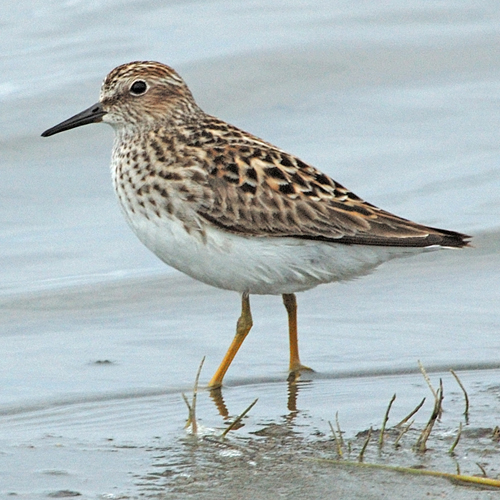General Description
The delicate Least Sandpiper is the world's smallest shorebird. In breeding plumage, it is mostly brown, including the breast. It does not have the streaks and spots on its side that the Western Sandpiper has. The adult in non-breeding plumage is drab gray, with a dark breast. The bill is relatively short and fine-tipped, with a slight droop at the end. Its yellow legs distinguish it from the other two Washington peeps, Western and Semipalmated Sandpipers, which have black legs. In flight, the Least Sandpiper shows a white stripe down its wing and white on either sides of its tail. The underwings are slightly darker than those of the other two peeps, as well. Juveniles are also brownish, but may be brighter rufous than adults, especially in comparison to the faded fall breeding plumage of the adults.
Least Sandpiper's are Abundant in Western Washington from July-September and April May.Habitat
Least Sandpipers breed from the northern boreal forest to the sub-Arctic tundra. They typically nest in sedge meadows, muskeg bogs, or coastal wetlands. They migrate all across North America, and some migratory and wintering habitat is coastal, while some is inland. Coastal migrants can often be found along tidal creeks, salt marsh edges, and mudflats, rarely on sandy ocean beaches. Inland migrants inhabit small, shallow ponds, sandy riverbanks, sewage treatment ponds, and lakeshores.
Behavior
Least Sandpipers usually roost by themselves or in small groups. They generally feed at the upper edge of mudflats, often in the vegetation, i.e., higher than Western or Semipalmated Sandpipers. When foraging, they walk slowly with their heads down, picking at food on the surface rather than probing into the mud.

No comments:
Post a Comment